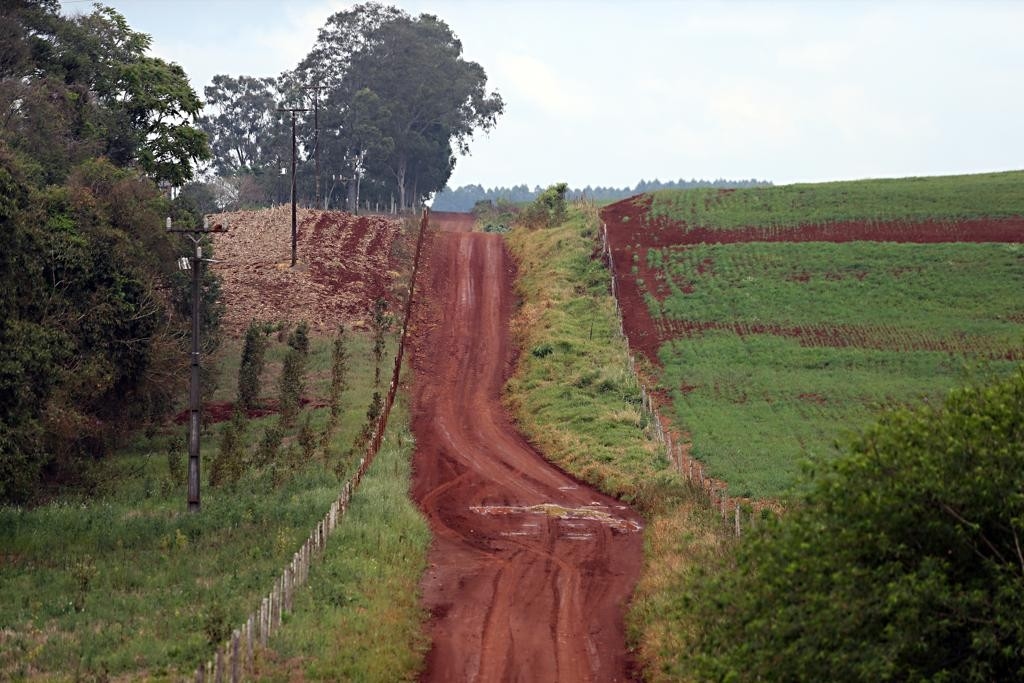Agriculture loses R$6.4 billion per year due to poor quality rural roads

Brazilian agriculture could reap economic gains of up to R$6.4 billion per year from reduced transportation costs alone if the conditions of so-called rural roads—unpaved roads that connect rural areas or urban centers—were improved. This amount would represent approximately 1.1% of the sector's value added to Brazil's Gross Domestic Product (GDP).
The calculations are part of a study produced and recently launched by the Research and Extension Group in Agroindustrial Logistics at the Luiz de Queiroz College of Agriculture (Esalq-Log) at the request of the Brazilian Confederation of Agriculture and Livestock (CNA).
According to the survey, Brazil has approximately 2.2 million km of rural roads, through which 1.4 billion tons of agricultural products circulate annually, including agriculture, livestock, and the forestry sector.
The total cost of transportation via these routes (including fuel, maintenance, supplies, labor, etc.) reaches R$16.2 billion annually, but a large part of this amount could be reduced with investments in road improvement.
With an average quality standard, spending could be reduced by R$2.7 billion per year (-16.9%), equivalent to 0.5% of the value added by agribusiness. If the quality standard were high, the savings would reach R$6.4 billion (-39.7%).
"This draws a lot of attention to how much money is being wasted on the table due to the poor quality of the country's rural infrastructure for the agricultural sector," says agricultural engineer Thiago Guilherme Péra, general coordinator of Esalq-Log.
From an environmental perspective, there would also be benefits. The current system of rural roads has contributed to the emission of 3.07 million tons of CO2 per year, according to researchers' estimates.
With an average road quality standard, there would be a reduction of 384 thousand tons of emissions (-12.5%), while the higher standard would increase the environmental gain to 1 million tons of less carbon in the atmosphere (-32.9%).
Among the segments most affected by the precariousness of local roads, the greatest impact is on the sugarcane chain, which could reduce operational transportation costs by up to R$2.4 billion per year.
Next comes corn and soybean production, with R$2.1 billion, and livestock production, with R$865.5 million. The forestry sector faces estimated annual losses of up to R$318.5 million due to the poor condition of the roads studied.
Study identifies roads as the highest priority for investment in agricultureTo identify which roads require the most urgent maintenance and repair, researchers developed their own indicator, called the Vicinal Road Prioritization Index (Ipev).
Ipev takes into account a series of factors across four dimensions: social, economic, environmental, and infrastructure. The variables used to calculate the indicator include:
- the added value of roads for agriculture;
- the number of rural enterprises;
- the average price of diesel in the microregion;
- the number of rural registrations per capita ;
- the density of rural employment;
- rainfall;
- water balance;
- the quality of local roads;
- the percentage of local roads in relation to the total number of highways; and
- the density of the neighborhood network.
"Do we need to invest in all microregions? Well, if we have them, yes. But we can prioritize. The tool demonstrates this prioritization," says Péra.
Of Brazil's 557 microregions, 177, which contain approximately 1.1 million km of local roads, were identified as high priority. Another 98, covering 421,000 km, are considered medium priority, while the remaining regions are less urgent in improving road conditions.
Investment in high-priority roads would be R$4.9 billion per yearThe study divides local roads into "tertiary," which are wider and connect to state or federal highways, and "unclassified," which typically allow only one vehicle to pass and connect properties to tertiary roads.
To adapt 177,000 km of tertiary roads in high-priority regions, R$4.9 billion per year would be required, with an annual maintenance cost of R$35,000 per km.
"The investment of R$4.9 billion per year to bring local roads up to a minimum quality standard is not only viable, it's strategic," says Elisangela Pereira Lopes, technical advisor to the National Logistics and Infrastructure Commission of the CNA.
“We are talking about a value that represents less than a third of the annual loss (R$16.2 billion) caused by the poor conditions of these roads, just in operational costs.”
Bringing all 367,000 km of service roads up to the minimum standard would cost R$10 billion per year, while improving the quality of 101,000 km of local roads from "poor" to "superior" in high-priority regions would require R$12.6 billion. The cost of maintaining them at this level is R$131,000 per km/year.
In March of this year, teams from CNA and Esalq-Log visited eight micro-regions in the states of Bahia, Goiás, Maranhão, Minas Gerais, Mato Grosso, Mato Grosso do Sul, Pará and Paraná to visit some areas in the field and confirm the study methodology.
Over 1,200 km of rural roads were covered, and 150 people involved in agriculture, including rural producers and municipal secretaries of infrastructure and agriculture, were interviewed. Problems such as potholes, erosion, undulations, mudflows, waterlogging, and precarious bridges were identified at these locations.
Among the administrative obstacles identified are a limited public budget, a large network and a lack of qualified technical labor to carry out the works.
Necessary investments in improving local roads by stateThe study addresses the panorama of each Brazilian state, in order to support parliamentarians in actions aimed at their strongholds, considering Ipev.
Considering the total annual cost required to adapt and maintain local roads, Minas Gerais leads the ranking of investment priorities, followed by Paraná and Rio Grande do Sul.
With 128,000 km of high-priority roads, the state of Minas Gerais would have to invest R$2.67 billion annually in adaptation and maintenance to achieve the minimum trafficability standard.
The state of Paraná would need to invest R$2.64 billion annually in 136,000 km of high-priority roads. For Rio Grande do Sul, an estimated R$2.59 billion is required for 134,000 km. The states of Pará, Mato Grosso, Bahia, and Goiás are the next largest in terms of investment requirements.
Considering the microregions in the different federative units, the following lead the list of high priorities for investment in neighboring roads: Alto Teles Pires (MT), Southwest Goiás (GO), Entorno de Brasília (GO), Dourados (MS),/ Barreiras (BA) and Altamira (PA).
gazetadopovo





